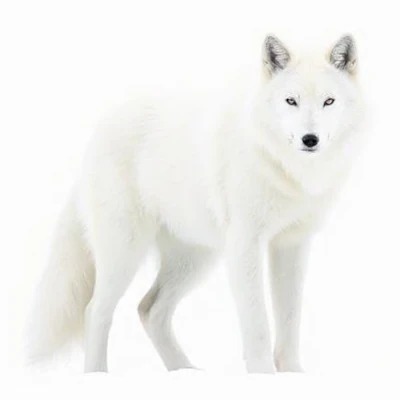
The Siberian Wolf (Canis lupus albus) is a subspecies of the gray wolf, adapted to the extreme conditions of the cold regions of Siberia. With its thick fur and cold resistance, this canid is a formidable predator and a symbol of the wild fauna of the Arctic regions.
The Siberian Wolf is one of the largest wolf subspecies, measuring between 80 and 100 cm at the withers and weighing between 40 and 60 kg. Its fur is dense and white to light gray in color, allowing it to blend into snowy landscapes. Its paws are wide and adapted for walking on snow, and its ears are smaller to reduce heat loss.
The Siberian Wolf (Canis lupus albus) belongs to the Canidae family. Here is its scientific classification:
The Siberian Wolf is a distinct subspecies of the gray wolf, adapted to the extreme climatic conditions of Siberia.
The Siberian Wolf primarily inhabits the cold and remote regions of Siberia, including the tundra and boreal forests. Its habitat is characterized by long, harsh winters with temperatures that can drop below -50°C. These wolves are also found in parts of northern Russia and Scandinavia.
The Siberian Wolf is a social animal, living in packs of 5 to 10 individuals, although some packs can be larger. These packs are structured around a strict hierarchy, with a dominant alpha pair. Siberian wolves are known for their cooperation during hunts, allowing them to track larger prey such as moose and deer.
The Siberian Wolf is a strict carnivore, feeding mainly on large mammals such as moose, deer, and wild boar. During times of scarcity, it can also feed on small mammals, birds, and carrion. Its ability to travel long distances to find food is essential for its survival in this harsh environment.
The Siberian Wolf is not currently considered an endangered species, but it faces threats such as hunting and habitat fragmentation due to human activity. Conservation efforts include protecting wild areas and regulating hunting.
The Siberian Wolf (Canis lupus albus) is closely related to other wolf subspecies, including the Gray Wolf (Canis lupus lupus) and the Arctic Wolf (Canis lupus arctos). These species share common characteristics, but the Siberian Wolf has adapted to more extreme climatic conditions.
Observing a Siberian Wolf in its natural habitat is a rare and fascinating experience. Here are some tips for respectful observation:
By following these tips, you can observe the Siberian Wolf while preserving its natural environment.